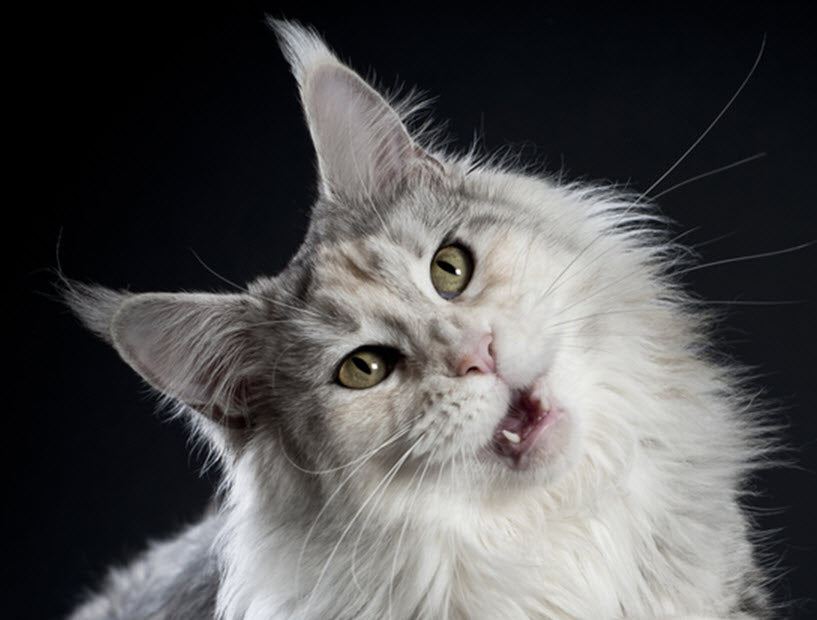Cats make a variety of vocal sounds to convey their needs and reactions to things happening around them. Do you understand what your cat is trying to tell you? Here are some common noises with the meanings they often suggest.
- Chirp – A chirp is likely a high-pitched, short sound that communicates a surprised greeting. Your cat might greet you when you first get home with a chirp, or when you first get up in the morning. It can also be used when they want some attention from you. Kind of like a “Hey, what about me?”
- Chatter – Cats will give off a sound from their throat, often combined with a fast movement of their lower jaw. This sound is often heard when a cat is stalking, either outside or looking out the window, and just prior to them attacking their prey.
- Hiss – When a cat is not happy with their situation, such as another cat in their space, they will use a hiss that comes across as a sharp sound similar to a sustained “S”. They may also hiss if they are frightened by something. Often a hiss is the initial response to scare away a threat, and if that is not effective, they may follow that up with a growl or attack.
- Growl – A growl is a low, long guttural sound that is basically a warning. It is a sign of aggression and is used to express anger. Many cats will combine a growl with a smacking of their claws or a bite. Think of a growl like a string of cusses at the object of their dissatisfaction.
- Purr – Most times, a purr means that your cat is happy and content. Cats can also purr when they are scared or sick. A purr is a throaty vibration that varies from cat to cat. Some cats purr very loudly and their entire bodies vibrate; others purr very softly. You’ll often hear a cat purr when they are snuggled in your bed, being petted in your lap or starting to eat. When happy, the purr is a slow, relaxed sound. When scared, the pace is faster. Behaviorists believe cats use a purr to comfort themselves in a scary situation.
- Meow – Every cat has their unique arsenal of meows. In general, meows are calls for attention. They may want you to pet them, watch them play with a toy or beg for a treat or food. Other times, they can meow when your eyes meet across the room as if to say “I see you too.” Cats can also meow when they are in pain using a high-pitched, loud guttural meow.
The best way to get to understand what your cat is saying is to observe what’s going on around them when they are making sounds. Over time, you will be able to connect those sounds with their meanings. Listening to your cat and responding appropriately will strengthen the bond you share.
This blog is brought to you by Under the Weather®, makers of a line of award-winning freeze-dried bland diets for dogs and supplements for both dogs and cats.
Under the Weather is also an avid participant in the pet overpopulation cause. A portion of every sale is channeled to the Ruffy Rescue Transport Fund which finances the transportation of pets from overpopulated shelters around the U.S.A. to Vermont for adoption. The fund also covers the cost of spaying and neutering these animals. Get to know more about Ruffy and the inspiration for our company.
View Our Products
Visit Our Blog Library




